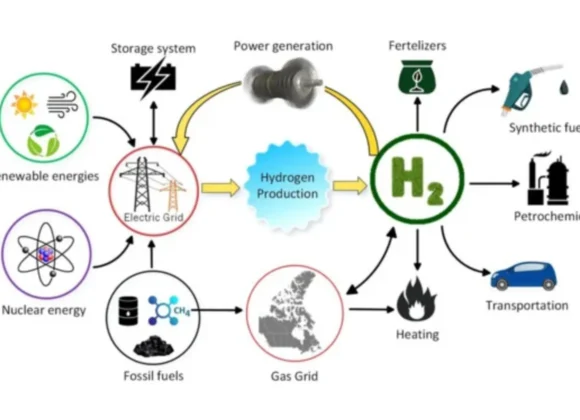Electronic devices have become an essential part of our lives today. Technology is in all of us, from smartphones, which are used for communication, to the gadgets we use in our homes. What are the elements that make them function? In this article, we will look at the critical components of digital devices and their roles and significance.
Introduction to Electronic Devices
Electronic components are among the most fundamental components of electronic circuits. They are discrete or physical objects that control electrons and magnetic fields. The components can be divided into two types: passive and active components. Active components, such as integrated circuits and transistors, require an external power source to function and operate, whereas passive components, such as capacitors and resistors, do not.
Knowing the different types of electronic parts is crucial for anyone involved in creating or managing electronic devices. Each element has a particular function and is an integral part of the function and functionality of the whole technology.
Resistors
Resistors are one of the most essential components of electronic circuits. They are utilized to limit the flow of electricity that regulates the current and voltage in circuits. Resistors can be found in many applications, such as the restriction of current, the division of voltage, and the processing of signals.
Types of Resistors
Fixed resistances are made by using the invariable resistor.
Variable Resistors are Also called potentiometers. They allow the modification in resistance.
Applications of Resistors
- Resistors serve to create these voltage dividers. The voltage is decreased until the level is a specific amount.
- Resistors are employed to reduce the amount of the current that flows through a circuit. This is protecting the most vulnerable circuits.
Capacitors
Capacitors are used to conserve energy and release it when needed. They are comprised of two plates that conduct electricity. They are separated by an insulating substance known as dielectric. The primary function of capacitors is to store the charge and release it when required in applications that call for timing and processing.
Types of Capacitors
Ceramic Capacitors Making use of ceramic materials. They are incredibly light and utilized to power high-frequency devices.
Electrolytic Capacitors can be described as capacitors having greater capacitance. They are employed to filter energy supply and power storage.
Applications of Capacitors
- Energy Storage Capacitors are utilized to store power and release it when needed, like flashes, for instance, in cameras.
- Filtering capacitors help smooth out voltage fluctuations that occur in the power source.
Inductors
Inductors help conserve energy by forming the magnetic field structure when an electric current flows through an inductor. They are typically constructed from wire coils and are employed in applications requiring power storage filters or an inductance.
Types of Inductors
Inductor Air Core inductors that do not have a magnetic core are utilized in high-frequency applications.
“The Iron Core are inductors with an iron core made of magnetic iron. This boosts the inductance of their products.
Applications of Inductors
- Filtering Inductors can be joined with capacitors to stop unwanted electromagnetic frequencies from circuits.
- Inductors can store energy. They store the energy they release in their magnetic field at times of need.
Diodes
Diodes may be classified as semiconductors that permit the flow of electricity only in one direction. They comprise components like silicon and germanium and feature a P-N junction that produces an unidirectional electrical current.
Types of Diodes
Rectifier Diodes These devices convert AC into DC to the power source.
Zener Diodes are used to offer protection and control voltage.
Applications of Diodes
- Rectification Diodes are a possibility in rectifier circuits to convert the alternating current (AC) to direct current (DC).
- Zener diodes that regulate voltages are used to ensure that they’re equal to the voltage.
Transistors
Transistors are semiconductor components used to boost or turn on electrical communications. They are the fundamental element of electronic devices and are all over the world, from phones to computers.
Types of Transistors
Bipolar Junction Transistors (BJT) Bipolar Junction Transistors (BJT) These transistors employ electrons and holes as charge carriers.
Field Effect Transistors (FET) control electric currents by using electricity.
Applications of Transistors
- Enhancement Transistors can boost weak signals within audio and radio-related applications.
- Transistors: Transistors function in switching electronics.
Integrated Circuits (ICs)
HTML0 integrated circuits, often called ICs, are complex circuits comprising various elements, including transistors, resistors, and capacitors, all on one chip. They have revolutionized electronics, allowing the development of tiny, robust, high-performance, sturdy, and long-lasting gadgets.
Types of ICs
Analog IICs: They are used in applications dealing with signal processing.
Digital ICs are utilized in digital processing and computing.
Applications of ICs
- Computer ICs are the heart of computers and different electronic equipment.
- Signal Processing AnalogICs are utilized in video and audio equipment to process signals.
Microcontrollers
Microcontrollers are computers of a small size that are integrated into one integrated circuit. They have integrated processors, memory, and input and output peripherals. They can be used to control electronic devices.
Applications of Microcontrollers
Microcontrollers used to control embedded devices are utilized in embedded systems to control vehicles, appliances, and other gadgets.
Automation can be used in industrial automation to control machinery and procedures.
Switches
They are devices that open or close an electric circuit and manage the electricity flow. They come in various forms, including mechanical, electronic devices , and microelectromechanical systems (MEMS).
Types of Switches
Switches made of metal are operated manually, like light switches.
Electronic switches can be controlled electronically by transistors and relays.
Applications of Switches
Control Systems These systems are used to regulate electronic operations.
User interface Mechanical switches are employed in user interfaces such as the keyboard and controls.
Batteries
Batteries are electrochemical devices that can be utilized to keep energy and produce energy. They are vital for electronic devices that can be carried and operate on electricity.
Types of Batteries
Primary Batteries are not rechargeable like the alkaline batteries.
Secondary Batteries: rechargeable batteries, like lithium-ion batteries.
Applications of Batteries
Portable Electronics These are the devices available in laptops, smartphones, and a wide range of portable devices.
Energy Storage is used to store energy to store energy that can be used later to utilize renewable energy sources.
Relays
Relays are switches made up of electromechanical parts that utilize an electromagnet for switching between circuits switched on and off. They can use a low-power signal to regulate the power circuits, making them suitable for various needs.
Types of Relays
Electromechanical Relays Use an actual moving component to switch off or make the circuit operational.
Solid State Relays Use electronic devices that don’t have moving parts.
Applications of Relays
Automotive Systems They are used in vehicles to control different electrical tasks.
Industrial Control It’s used in industrial control systems that assist by switching high-power devices.
Conclusion
Electronic Devices are the core of our technological age. Each component plays an essential function to contribute to the safety and efficiency provided by electronic gadgets. From the simplest resistor to the more complex integrated circuit, knowing the different components is essential for anyone working in the area that deals with electronics. If you’re a dedicated enthusiast or a professional, understanding these vital components will assist you in designing, creating, and fixing electronic gadgets.



